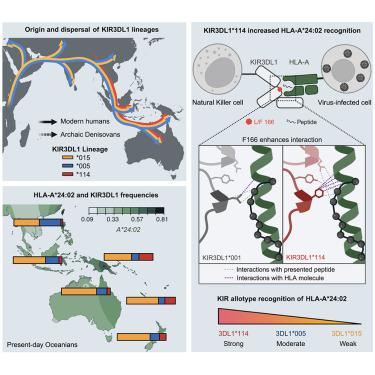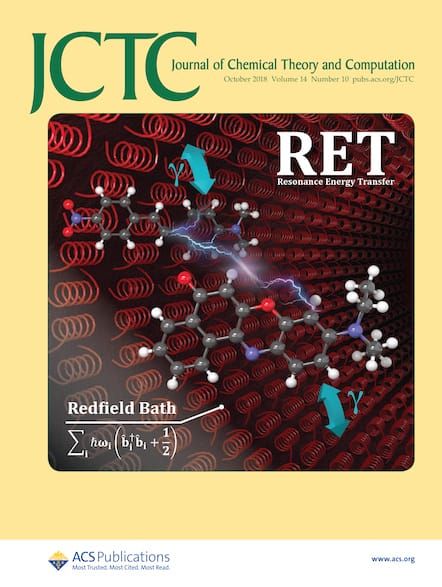An archaic HLA class I receptor allele diversifies natural killer cell-driven immunity in First Nations peoples of Oceania
IF 5.7
1区 化学
Q2 CHEMISTRY, PHYSICAL
引用次数: 0
Abstract
Genetic variation in host immunity impacts the disproportionate burden of infectious diseases that can be experienced by First Nations peoples. Polymorphic human leukocyte antigen (HLA) class I and killer cell immunoglobulin-like receptors (KIRs) are key regulators of natural killer (NK) cells, which mediate early infection control. How this variation impacts their responses across populations is unclear. We show that HLA-A∗24:02 became the dominant ligand for inhibitory KIR3DL1 in First Nations peoples across Oceania, through positive natural selection. We identify KIR3DL1∗114, widespread across and unique to Oceania, as an allele lineage derived from archaic humans. KIR3DL1∗114+NK cells from First Nations Australian donors are inhibited through binding HLA-A∗24:02. The KIR3DL1∗114 lineage is defined by phenylalanine at residue 166. Structural and binding studies show phenylalanine 166 forms multiple unique contacts with HLA-peptide complexes, increasing both affinity and specificity. Accordingly, assessing immunogenetic variation and the functional implications for immunity are fundamental toward understanding population-based disease associations.

一种古老的 HLA I 类受体等位基因使大洋洲原住民的自然杀伤细胞驱动免疫多样化
宿主免疫力的遗传变异影响着原住民可能经历的不成比例的传染病负担。多态人类白细胞抗原(HLA)Ⅰ类和杀伤细胞免疫球蛋白样受体(KIR)是自然杀伤细胞(NK)的关键调节因子,NK细胞介导早期感染控制。目前还不清楚这种变异如何影响它们在不同人群中的反应。我们的研究表明,在大洋洲的原住民中,通过积极的自然选择,HLA-A∗24:02 成为了抑制性 KIR3DL1 的主要配体。我们发现 KIR3DL1∗114 广泛分布于大洋洲并为大洋洲所独有,是源自古人类的等位基因系。来自澳大利亚原住民捐献者的 KIR3DL1∗114+NK 细胞通过结合 HLA-A∗24:02 受到抑制。KIR3DL1∗114 系是由残基 166 上的苯丙氨酸定义的。结构和结合研究表明,苯丙氨酸 166 与 HLA 肽复合物形成多种独特的接触,从而提高了亲和力和特异性。因此,评估免疫遗传变异及其对免疫的功能影响对于了解基于人群的疾病相关性至关重要。
本文章由计算机程序翻译,如有差异,请以英文原文为准。
求助全文
约1分钟内获得全文
求助全文
来源期刊

Journal of Chemical Theory and Computation
化学-物理:原子、分子和化学物理
CiteScore
9.90
自引率
16.40%
发文量
568
审稿时长
1 months
期刊介绍:
The Journal of Chemical Theory and Computation invites new and original contributions with the understanding that, if accepted, they will not be published elsewhere. Papers reporting new theories, methodology, and/or important applications in quantum electronic structure, molecular dynamics, and statistical mechanics are appropriate for submission to this Journal. Specific topics include advances in or applications of ab initio quantum mechanics, density functional theory, design and properties of new materials, surface science, Monte Carlo simulations, solvation models, QM/MM calculations, biomolecular structure prediction, and molecular dynamics in the broadest sense including gas-phase dynamics, ab initio dynamics, biomolecular dynamics, and protein folding. The Journal does not consider papers that are straightforward applications of known methods including DFT and molecular dynamics. The Journal favors submissions that include advances in theory or methodology with applications to compelling problems.
 求助内容:
求助内容: 应助结果提醒方式:
应助结果提醒方式:


